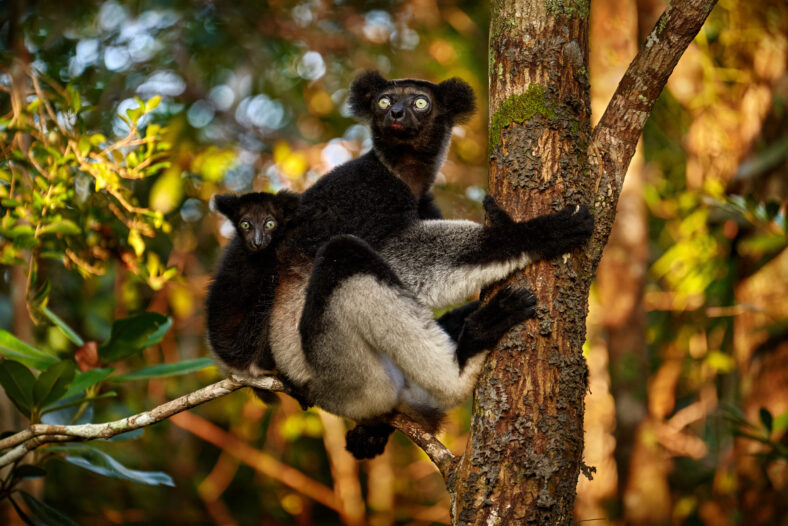These Critically Endangered Baby Lemurs Sing Off-Key Like Human Kids Do

It takes time for young children to learn how to sing in tune. As they develop and become familiar with the range of their own voices, their ability to match pitch and follow a tune improves. It turns out that young lemurs are the same way.
Madagascar’s singing lemurs, the indris, sing off-key in infancy and get better as adults. These large, black-and-white lemurs with buggy eyes are a critically endangered species.
In a new study, researchers from the University of Warwick and the University of Turin analyzed the vocal patterns of Madagascar’s singing lemurs at different ages. They found that the lemurs had similar vocal development to humans, indicating a shared ancestry.
Our lineages diverged over 77 million years ago when dinosaurs still existed. It is likely that a knack for music evolved twice after our lineages split.
Indris sing shrieking calls to communicate with family members, reinforce social bonds, and defend their territory. They sing together in family groups, much like a choir, making them stand out from other lemur species.
Their songs consist of long, melodic notes, but not all of them are sung in perfect harmony. The irregularities are known as nonlinear phenomena (NLP). They include cracks, rough, noisy sounds, and jumps in pitch.
“There are multiple theories to explain why some indris produce rough and irregular sounds, including as a form of emotional expression or as a unique tool for communication,” said Dr. Chiara De Gregorio, the first author of the study and a postdoctoral research fellow at the University of Warwick.
The research team analyzed 62 wild indris and more than 16,000 notes. They determined that young indris produced significantly more NLPs than the adults, suggesting that singing in tune is an ability that is learned and developed.
In addition, there were differences between male and female lemurs. The males sang with more roughness and instability compared to the females.

Sign up for Chip Chick’s newsletter and get stories like this delivered to your inbox.
This may be due to differences in social roles. For example, a type of irregular sound called subharmonics carries on into adulthood, which can make the singer sound more intimidating.
The researchers also noticed more “off-key” elements at the end of musical phrases, indicating that the animals get vocally tired like humans do after a long singing performance.
Learning how to sing in tune takes time. The communicative function of the lemurs’ singing offers a glimpse into the origins of rhythmic and melodic communication in primates and humans.
“Our findings go beyond just explaining NLP in the vocalizations of a single species; they shed light on the deeper evolutionary origins of vocal nonlinearities across the animal kingdom,” said Dr. Daria Valente, the co-first author of the study from the University of Turin.
The details of the new study were published in the journal Philosophical Transactions of the Royal Society.
More About:Animals